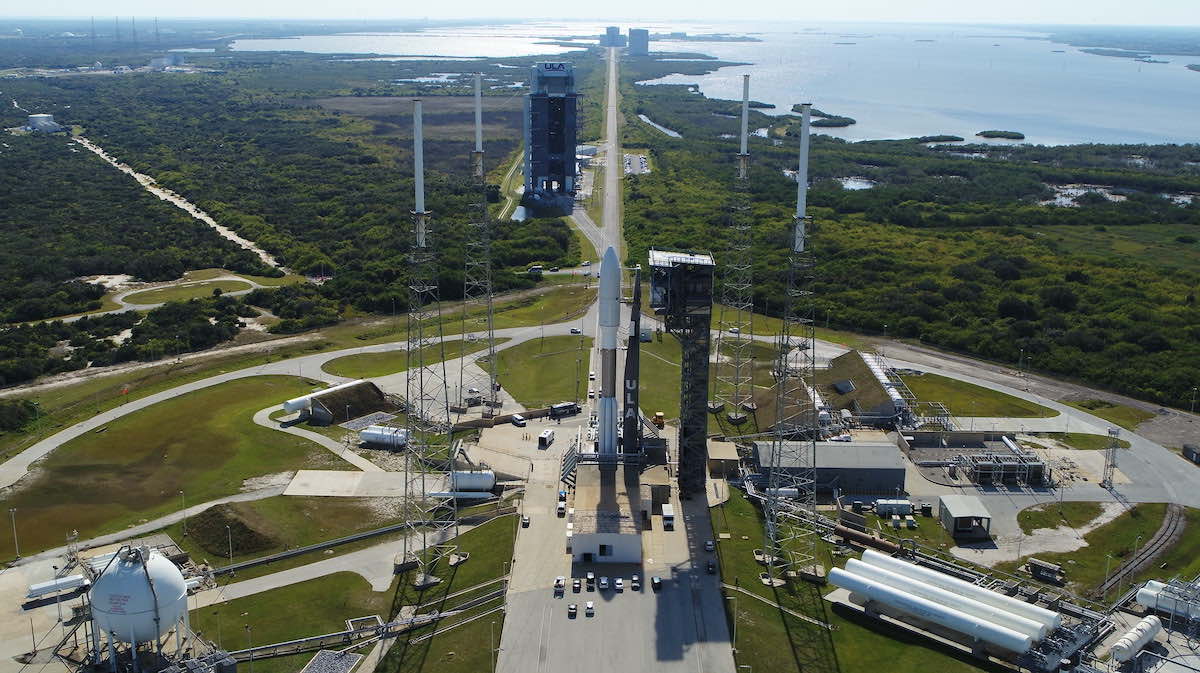
United Launch Alliance delayed the planned launch of an Atlas 5 rocket from Cape Canaveral Sunday after discovering a kerosene fuel leak in the launch pad’s ground storage system. Officials tentatively rescheduled launch with two U.S. military satellites for Monday morning.
ULA announced the launch delay around 7 p.m. EST Saturday (0000 GMT Sunday), just prior to the start of the countdown for a planned liftoff before dawn Sunday.
“During initial operations, a leak was discovered in the Rocket Propellant-1 (RP-1) ground storage system,” ULA said in a brief statement.
RP-1 is a highly-refined rocket-grade kerosene fuel used on the Atlas 5 rocket’s first stage. The first stage’s Russian-made RD-180 engine consumes kerosene fuel in a mixture with super-cold liquid oxygen.
The kerosene fuel was supposed to be loaded on the Atlas 5 first stage Friday afternoon, following rollout of the rocket from ULA’s Vertical Integration Facility to launch pad 41 at Cape Canaveral Space Force Station. But the fuel loading was delayed to Saturday, and ULA didn’t say why teams were unable to complete the process Friday.
The Atlas 5 launch team loads cryogenic propellants into the Atlas 5 just a few hours before liftoff. The rocket’s Centaur upper stage consumes super-cold liquid hydrogen and liquid oxygen.
The new target launch time is at 4:04 a.m. EST (0904 GMT) Monday, the opening of a two-hour launch window, according to ULA.
The official launch weather outlook from the U.S. Space Force’s 45th Weather Squadron predicts a 90% chance of favorable weather for liftoff early Monday. Forecasters expect partly cloudy skies and patchy fog on Florida’s Space Coast, winds from the south at 6 knots, and a temperature of 64 to 66 degrees Fahrenheit.
The Atlas 5 rocket will launch with two U.S. Space Force satellites hosting an array of technological prototypes and experiments. Military engineers will test their readiness for use on future operational space missions.
The launch is sponsored by the military’s Space Test Program, which oversees many of the Defense Department’s experimental space missions. The larger of the two satellites on the Atlas 5 rocket, named STPSat 6 and built by Northrop Grumman, hosts a NASA laser communications experiment and a payload for the National Nuclear Security Administration designed to detect nuclear detonations to verify international treaty compliance.
The military hasn’t disclosed specifics for other experiments on the mission, but officials said they generally will test technologies related to space domain awareness, space weather monitoring, and communications.
A rideshare satellite named the Long Duration Propulsive ESPA, or LDPE 1, also is riding to orbit on the Atlas 5 rocket. It is mounted to the rocket below STPSat 6 inside the 17.7-foot (5.4-meter) diameter payload fairing.
LDPE 1 hosts its own technological experiments, and will have its own propulsion system to maneuver in space.
The Atlas 5 rocket will aim to release both satellites in geosynchronous orbit more than 22,000 miles (nearly 36,000 kilometers) over the equator around seven hours after liftoff.
Email the author.
Follow Stephen Clark on Twitter: @StephenClark1.
from Spaceflight Now https://ift.tt/3Ge6dAX
via World Space Info







0 comments:
Post a Comment